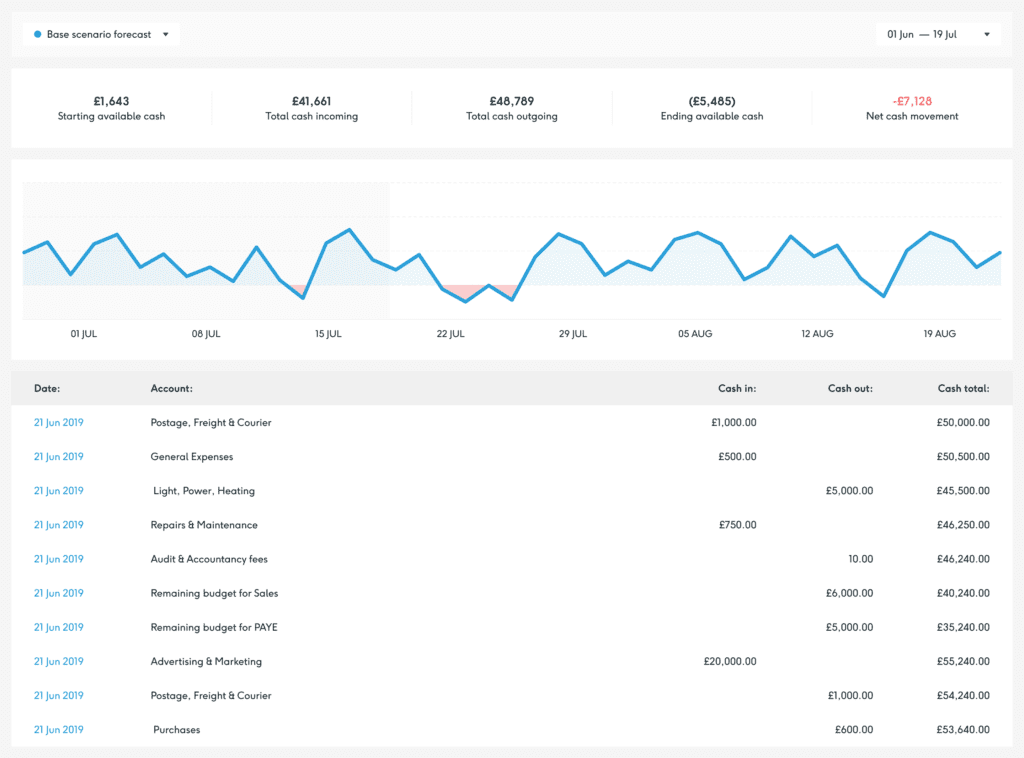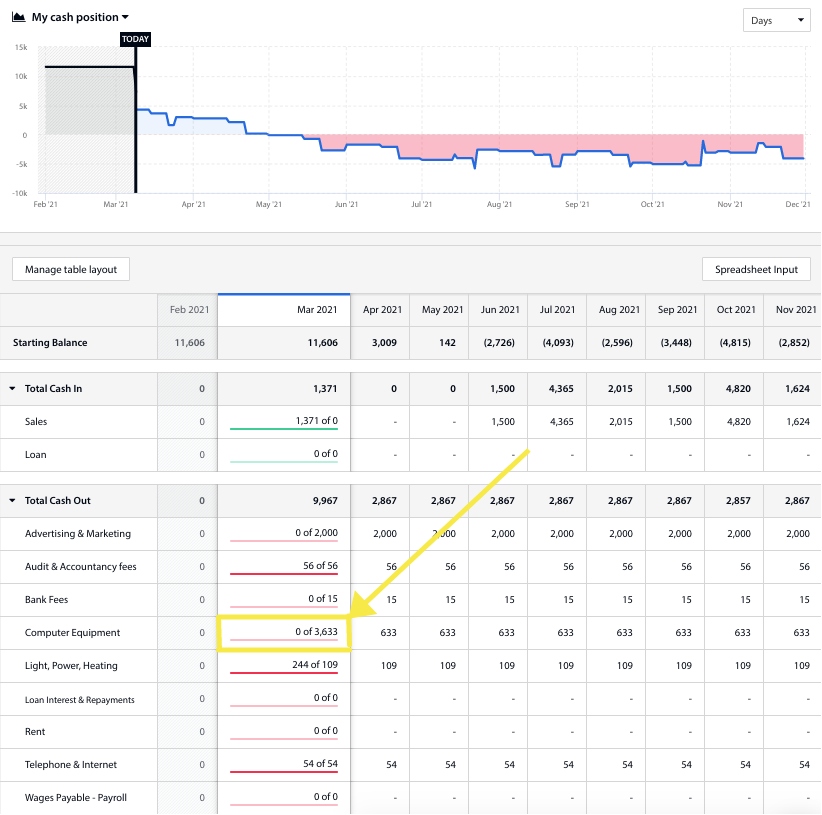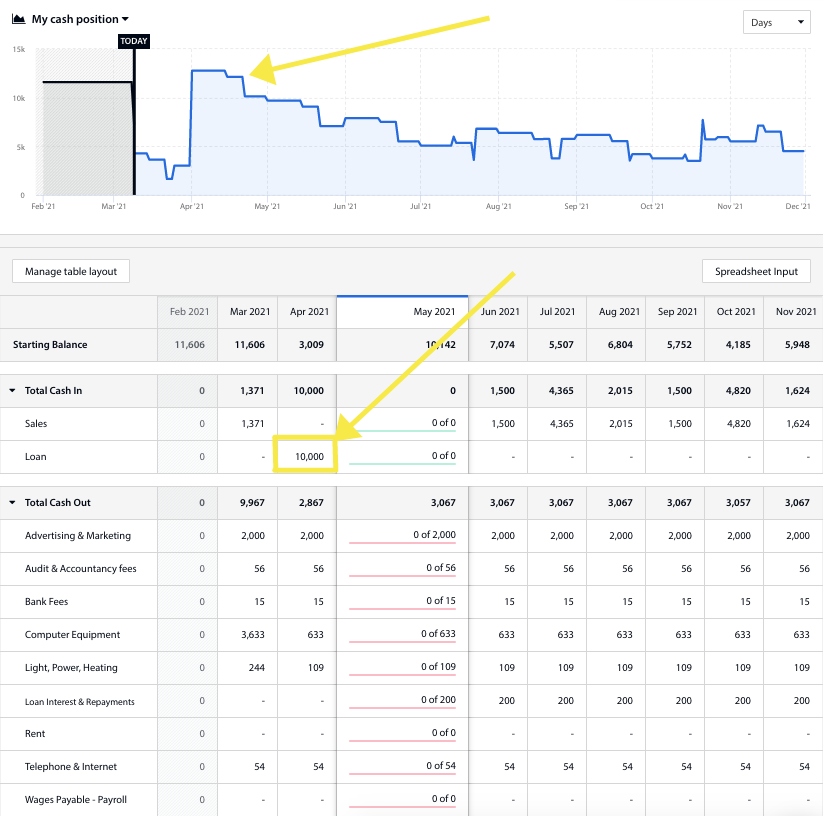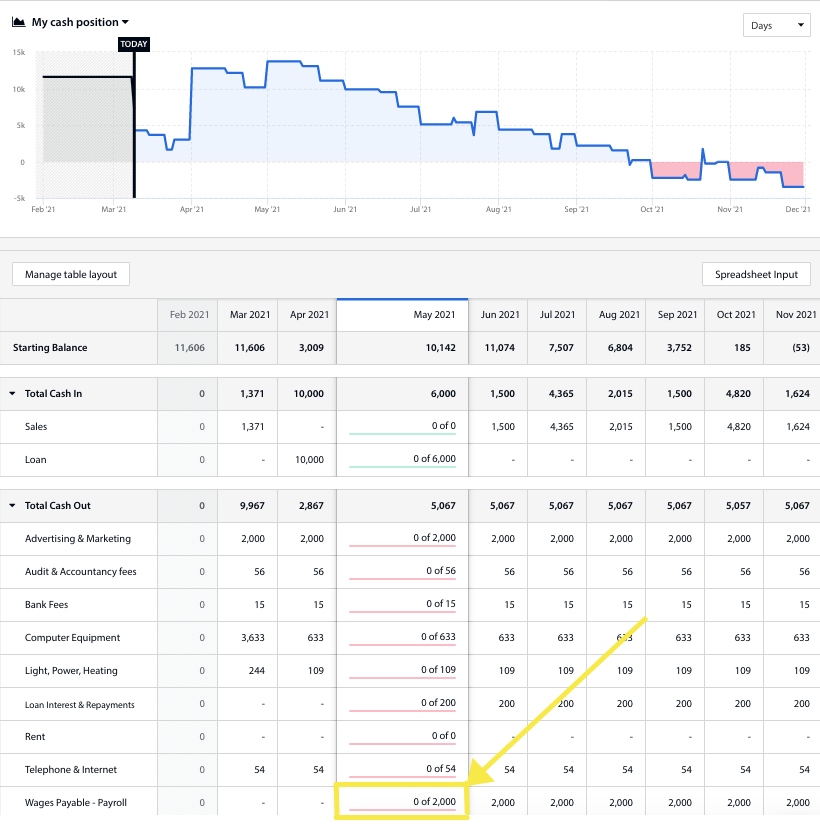Starting a new business is an exciting time. It’s also an extremely busy time, when you have to make important decisions under pressure – decisions that could impact the future success of your start-up business.
Understanding your business’s cash flow is essential to guiding your decision-making. There are three important questions we believe every start-up business owner should be asking:
- How much cash is coming in?
- When is it going to hit my bank account?
- When can I pay my bills?
To give your business the best chance of success, it’s vital you can quickly find the answers to these three questions – and your data must be accurate. Luckily, you can answer them with confidence using a cash flow forecast.
What is a cash flow forecast?
A cash flow forecast is a vital source of information for any business owner. It’s a place you can instantly see your current and future cash position, and you can use it to plan for any bumps in the road ahead. As a visual representation of your start-up’s cash flow, your forecast will help you predict when you may run into difficulty and means you can plan ahead for any cash shortfalls.
Cash flows in and out of your business all the time. It flows out in the form of payments and expenses like staff salaries or rent, and it flows in through the sales of your products or services. It’s a constant ebb and flow, it varies daily and you can monitor these fluctuations in your cash flow forecast.

You can use a spreadsheet template to create your cash flow forecast, or you can save time and use software like Float to link up to your accounting platform and create the forecast for you.
There are two types of cash flow forecast – one uses what’s called the ‘direct method’ and the other the ‘indirect method’. The direct method looks at short term cash flow (this is the type of forecast you can build in Float) and is a daily, operational planning tool. Direct forecasts are based on invoices and bills in your accounting software combined with your predictions. Direct forecasts are more accurate but don’t go as far ahead as indirect forecasts. For instance, Float goes up to 3 years ahead.
The indirect method looks at the longer term future of your business (think 5-10 years) and is less accurate and less operational than a direct forecast. Think business plans or loan applications.
[leadmagnet id=”18022″]
Why is cash flow important for a start-up?
For a start-up business, ensuring you have the cash to survive and grow is usually an immediate concern. So in this article we’ll look at the direct method, which is short-term cash flow forecasting based on your operating activities.
As you get set up ready to start trading, it’s likely your start-up business will have a lot of upfront costs. While the cash flowing out of your business can be high in that initial period, it may take a while to start building your customer base and making sales, so during the same period income is low. To manage this shortage of cash, many start-ups rely on working capital from loans, investors or other forms of credit to keep their cash flow looking healthy.
As a business owner, it’s important that you know if you have enough cash coming in to meet your expenses. A cash flow forecast will help you look at all of your incomings and outgoings and see what cash (if any) is left over. In Float, you can set dates on invoices and bills for when you actually expect cash to move – because while you may start making sales in month 2, you might not actually see that money until further down the line.
In addition to helping you stay on top of your current cash flow situation, a cash flow forecast can help you plan ahead too.
“Cash forecasting is particularly important for new businesses as it enables the owner to predict the future cash flows. This exercise can identify periods in the future when cash may be running so low that it can’t cover operational costs. Catching this early is key! You may have time to bridge this ‘funding gap’ (as we accountants like to harp on about) with debt or equity. As a new business, it may take longer to work out how to fund this gap as relationships with banks, suppliers and even customers may still be fresh and trust is still building. Take a deep breath, create an excellent business plan and stay on top of your cash with regular cash flow forecasting.” Mattea McClean, CA, Accounting Education Manager at Float
A cash flow forecast can help your start-up grow, because you’ll be able to predict when you’re going to break even and when you’ll have enough surplus cash to start reinvesting and growing your business. You may be in the early days of your business right now, but as a start-up you’ll likely have plans to expand – hiring new employees, getting office space or opening new premises. If you’ve got big plans for your business, cash flow forecasting can guide you through start-up success and beyond.
Example of a cash flow forecast for a start-up business
Let’s look at an example of a cash flow forecast for a start-up business.

Imagine you want to start your own business that helps freelancers book a hot desking spot in businesses with spare office space.
To get started you’re going to need some equipment, so factor that into your start-up costs. At the moment you’ll work from your spare room, so no need to think about renting an office space for now.
In addition to one-off set up costs, you’ll have recurring expenses such as phone, internet and maintaining your own website. Marketing is also going to be important to get your name out there and reach potential customers, so make sure you set aside some money each month for advertising.

Most new business owners have a pool of money to start off their new enterprise. However, you may find you quickly need to secure more funding to get up and running.
According to a report by Score the main source of funding obtained by start-ups is through a bank or other financial institution (8.2%) and the second most common is loans from a friend or family member (4.8%). The same report found that start-ups used the funding for mainly purchasing equipment (63.3%), purchasing inventory (48.1%) and marketing (48.1%).
Let’s add a loan to this example.

So you get funding from your bank to help you market your new business and the marketing goes well – so well in fact that suddenly you have more new business than you can handle!
Time for an extra pair of hands? It makes sense to bring an employee on board. However you might not receive payment for the work you’re doing now for another 90 days – so how can you pay their monthly salary? More funding might be required to hire your first employee.

Now you and your new employee are up and running, and your invoices are starting to be paid. You’re gradually paying off your loans and taking a salary for yourself. But working from your spare room isn’t ideal, is it? One day you’d like to rent some office space, so clients can pop in for meetings and you can have a better work/life balance.
How will you know when the right time to rent office space is? Using Float’s scenario planning feature you can plan for big business decisions like moving into an office. Scenario planning takes your existing cash flow forecast and builds in ‘what-if’ scenarios so you can see the impact a decision will have on your cash flow.

You can see in this example, you’ll have to win a few more regular clients before you can plan to move to a new office. Using a cash flow forecast to plan helps you know exactly when the right time is to make a move to a new office space.
We hope this example has given you a good understanding of why cash flow is so important to a start-up business.
Are you ready to start forecasting your cash? Try out Float for free now.
Further reading:
https://floatapp.com/blog/small-business-big-questions/
